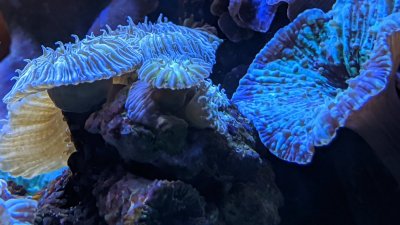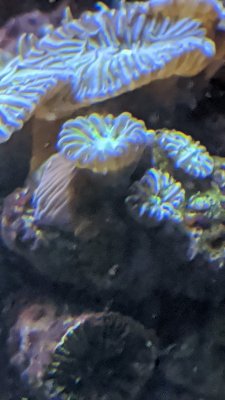- Joined
- Jun 4, 2018
- Messages
- 81
- Reaction score
- 207
I had a large (7") plate coral die on me about 4 months ago after it got pushed into another coral overnight, I'm guessing by a large snail. I kept the skeleton since I heard they could grow new polyps from the desk skeleton. I completely forgot about it until a few weeks ago when I saw some little green polyps all over it.
Has anyone had this happen to them? How do you remove them once they grow a little bigger? Some of them are very close together, almost touching and the biggest ones are about 3 to 4mm across, I counted about 50 to 60 them.
I'll try to take some more pictures, they seem to be concentrated in the center.

Has anyone had this happen to them? How do you remove them once they grow a little bigger? Some of them are very close together, almost touching and the biggest ones are about 3 to 4mm across, I counted about 50 to 60 them.
I'll try to take some more pictures, they seem to be concentrated in the center.



















